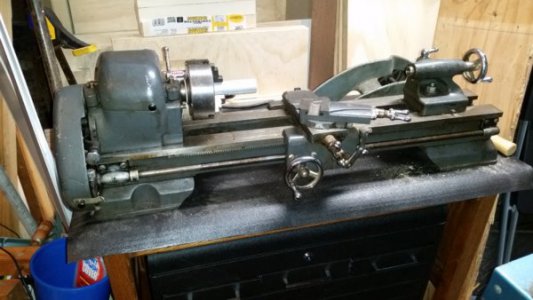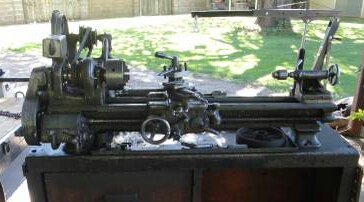- Joined
- Jul 18, 2017
- Messages
- 400
Hello,
I am a newbie who bought a nice old Craftsman 101.07301 metal lathe awhile ago. At the time I bought it, I really did not know (beyond the obvious size issues) the limitations of such a small lathe. At the same time, I am working out of a 1 car garage that also has woodworking equipment in it as well. I really lucked out and found an affordable South Bend 9" model A lathe being sold due to the owner passing away. The South Bend's bed is 48 inches. My 6" Craftsman's bed is 30 inches. Is there any practical reason for keeping the Craftsman lathe? I like the little guy, but if the South Bend can work on small parts just as well, I might just sell the Craftsman. I was once told by a hobby machinist that smaller lathes work better making smaller stuff than bigger lathes. As for what the lathe(s) would be used for, that is up in the air. I am hoping to share my workshop with friends so we have the ability to make anything we want. That is pretty vague I know. Hence, I now am here asking you experienced guys your opinion on keeping or selling the 6" lathe. I will be taking a poll , but if you have any friendly feedback, you are welcome to share
Thanks,
Susan


I am a newbie who bought a nice old Craftsman 101.07301 metal lathe awhile ago. At the time I bought it, I really did not know (beyond the obvious size issues) the limitations of such a small lathe. At the same time, I am working out of a 1 car garage that also has woodworking equipment in it as well. I really lucked out and found an affordable South Bend 9" model A lathe being sold due to the owner passing away. The South Bend's bed is 48 inches. My 6" Craftsman's bed is 30 inches. Is there any practical reason for keeping the Craftsman lathe? I like the little guy, but if the South Bend can work on small parts just as well, I might just sell the Craftsman. I was once told by a hobby machinist that smaller lathes work better making smaller stuff than bigger lathes. As for what the lathe(s) would be used for, that is up in the air. I am hoping to share my workshop with friends so we have the ability to make anything we want. That is pretty vague I know. Hence, I now am here asking you experienced guys your opinion on keeping or selling the 6" lathe. I will be taking a poll , but if you have any friendly feedback, you are welcome to share
Thanks,
Susan


Last edited:

